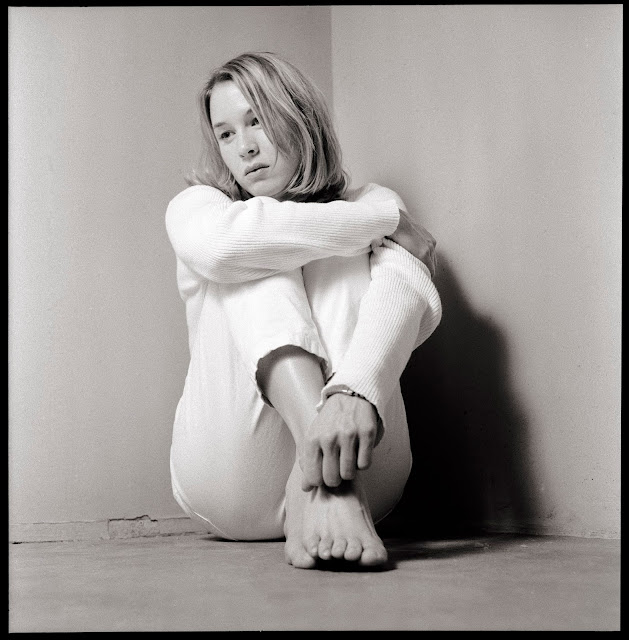Renée Zellweger goes barefoot
 |
| Renée Zellweger, barefoot - Photo © 1996 by Steven Lungley |
I was following along with the 2020 Academy Awards. Not really watching, but looking over as each award winner was announced, to see if it was someone I recognized. As Brad Pitt won, my memory kicked in – I photographed him. He threw a pencil at my head.
The show moved along and Joaquin Phoenix won his first Oscar. Memory clicked in, I photographed him. That was the year the film editor wanted me to ask if he would wear a straw hat. That was embarrassing. Then Renée Zellweger won. In came the memories again, I remember she wanted to take off her shoes.
Those are all old memories, from the period in my life when I was a media photographer. One of my photos was in print - somewhere in the world - every week for almost 10 consecutive years. A time period of approximately 500 weeks, and hence the name of this blog. But that part of my life is done. Partly by choice, and partly not by choice. I wondered if the photos were as good as I remember them. I also wondered if anyone would still be interested.
I have always had the belief that photos were valuable the week they were taken and 25 years later. Well, over 25 years have elapsed, so maybe its time to look back.
September 1996 and I am at the Toronto International Film Festival, taking photos for Eye Weekly, a Toronto based alternative newspaper. There are five writers covering the Festival and one photographer – that would be me – who was working with all of them. The writers would watch films and conduct interviews for articles that would be printed throughout the upcoming year, as the films were released. My job was to take a photo of the person being interviewed that would accompany the article.
For every film that is shown at #TIFF, there is at least one representative who was involved with the production that is available for media interviews. Usually that’s the film’s director and sometimes members of the cast. Depending on the film’s budget, media access is highly controlled, or highly encouraged.
Big budget Hollywood films will restrict individual access to the cast to outlets they consider worthy. Mostly that means TV shows and American based print publications. Smaller budget, independent films are shown at film festivals to generate interest in the project, as they try to get a distribution deal, and are open to almost any media coverage they can get. They want attention any way possible.
One of the writers had seen “The Whole Wide World”, an independent film, and felt it was worth reporting on, so they had interviewed one of the cast, a rather unknown young actress named Renée Zellweger.
This was just three months before Jerry Maguire came out. Once that film launched her into stardom, there is no way I would have had this kind of one-on-one photographic opportunity.
I don’t remember anyone being with Renée Zellweger that afternoon. No PR handler staring at their watch. Not even a writer using up my photo time, as they had conducted the interview earlier. Which, I have to say, was a rather unbelievable and highly unusual situation.
Sometime luck smiles on you.
I went to the hotel room where Renee was situated and looked around - a setting I had taken dozens, and possibly hundreds of photos in and was quite bored of - and asked Ms. Zellweger if she would mind shooting somewhere else. Maybe the fire exit? We were in a room at the end of the hall and the fire door was right beside the door room.
She was agreeable, with one reservation: Did I mind if she took off her shoes? Not at all, I replied. I wanted out of the hotel room, she wanted out of her shoes. Whatever helps make the subject comfortable. So she slipped off her shoes – sorry, I don’t remember the type - and we went to the fire exit. Not the most inspiring location, but it’s proximity to where we were could not be beat, and it looked different from the standard hotel room location.
The exits were dimly lit by overhead fluorescents, which made it a bit difficult to focus accurately with the manual focus cameras I was using. My standard portable lighting kit at the time were three flashes, none of which had modelling lights. This meant that I was lighting without any form of preview. I could not see where the light was going, and I could not take a test Polaroid in advance to see the results. I had to rely on pre-visualization, my light meter and practice.
For the image on the staircase, I had one flash bouncing into an umbrella on my left and another on the landing above, aiming down the stairs. I also set my shutter speed low enough to allow the florescent bulb go bright in the frame, but to too bright.
Couldn’t ask for more, really.
Renee won her second Oscar at the 2020 Academy Awards.
Technical stuff: Rectangular photos taken with Nikon FM2 with Nikkor 28mm f/2.0 lens and Fuji Super G 100 film. Square photos taken with Rolleiflex TLR with 75mm f/3.5 Schneider Xenar lens and Agfa APX400 B&W film.



Comments
Post a Comment